DIY - Designing Optimum Wavelength LED Lighting to Turbo-Boost Plant Growth (or Inhibit It)
Let there be light
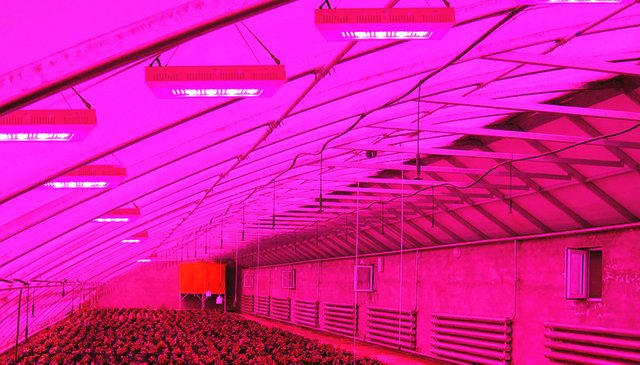
( image source)
This started long ago when I read or someone told me using red colored mulch would dramatically improve my tomato yield. So I did a little research and decided to do my own little experiment. Side by side I had identical tomato seedlings... same dirt, one with fire-engine red plastic tight over the top, one with black. Automatic watering and few feet apart on the patio. The red plant indeed grow much better... more branches, more leaves, taller, wider... It did fruit later than the control but ultimately the total fruit volume was higher and the plant healthier... Interesting. I heard reasons ranging from stimulating root nematode and fungus growth, to "communicating" to the plant it was in a competitive environment, and many other questionable explanations. I was perplexed.
Fast forward a few years... I've got a 210 gallon reef tank. Lighting is critical in these things. Use a standard grow light and you'll have a nice green algae tank. Use a regular house light and the spectrums needed for reef critters' survival might not be present. I started looking into why this was the case and how to prevent the algae growth.
With the entrance of high quality LEDs I can now answer both these questions.
What Wavelengths Plants Need
Green plants include all your typical well known plants as well as green algae, mosses, ferns, etc. I'm sure you know photosynthesis is the absorption of light energy and its transfer to energy-storing molecules (ATP and NADPH). Photosynthetic bacteria do it, and plants do it within their chloroplasts. Chloroplasts and photosynthetic bacteria are similar and in fact it is believed the origin of chloroplasts are the ancient capture of photosynthetic bacteria by eukaryotic cells.
Chloroplast Pigments
According to wikipedia green plants have six closely related photosynthetic pigments (in order of increasing polarity):
- Carotene - an orange pigment
- Xanthophyll - a yellow pigment
- Phaeophytin a - a gray-brown pigment
- Phaeophytin b - a yellow-brown pigment
- Chlorophyll a - a blue-green pigment
- Chlorophyll b - a yellow-green pigment
We will concern ourselves with the primary pigments for photosynthesis. Here they are graphed with their relative absorption rates of light. You'll not the absence of the use of green to yellow light. This is why healthy plants appear these colors. As leaves die in the fall they turn various colors. They turn these colors as those leaves begin to fail to absorb the wavelengths chloroplast pigments require and thats why autumn is so colorful.
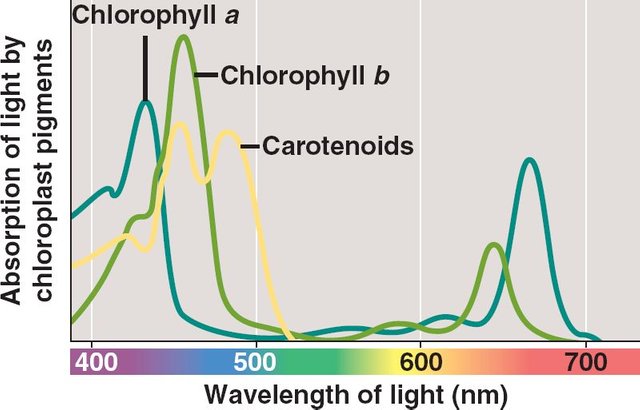
(image source)
The most important of the pigments are chlorophyll a and b. On average in nature chlorophyll a is present at a much higher ratio as compared to chlorophyll b. Typically this ration of a to b is 3 to 1.
Comparison of Light Sources
Here is an excellent graphic showing sunlight, as compared to typical LED white light, incandescent, and CFL. This graphic shows well why plants always grow better with good old sunlight...
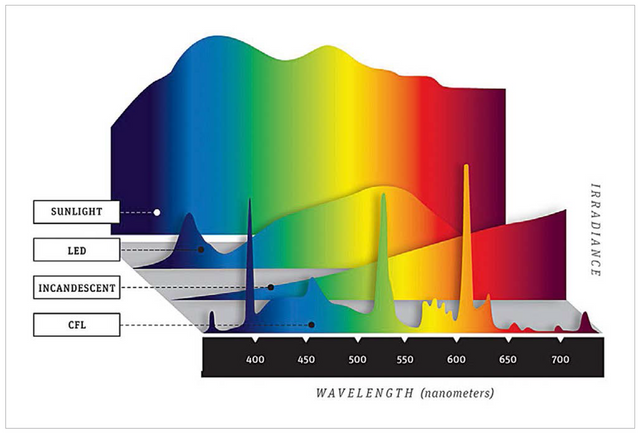
(image source)
So how do we do better when sunlight isn't an option? Enter the Light Emitting Diode or LED.
Why LED's?
Many don't know that you can buy LED's individually and wire them together for your own purposes. It is much cheaper to design and make your own setup than purchase a quality setup yourself. Everything you need can be purchased from places like Steve's LEDs. Just takes a little know how and effort, but the actual labor is beyond the scope of this article. We'll discuss that later. For now, lets focus on the why.
LED lights are of course generally cool running and power efficient, long lasting and cheap to manufacture. What many don't know is they have superb control over the wavelengths an LED can be manufactured to produce. As we can see the light that will be wasted on a green plant, we can design our lighting to only expend energy on wavelengths we care about. Lets start off with white light.
White Light
White light is the combination of a wide range of wavelengths of light and this is why it appears "colorless" (which of course is an incorrect descriptor). White light can be described by its color temperature which more or less is describing the relative emittance of light at its wavelength combinations.
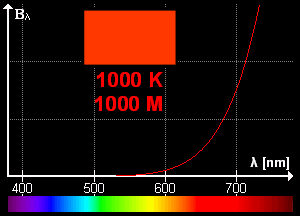
(image source)
As an example of how plants may use this light, I've overlaid a few popular high power LEDs' wavelength outputs over our pigment graphic.
Philips Luxeon ES 5,000K Neutral White 3 Watt LED
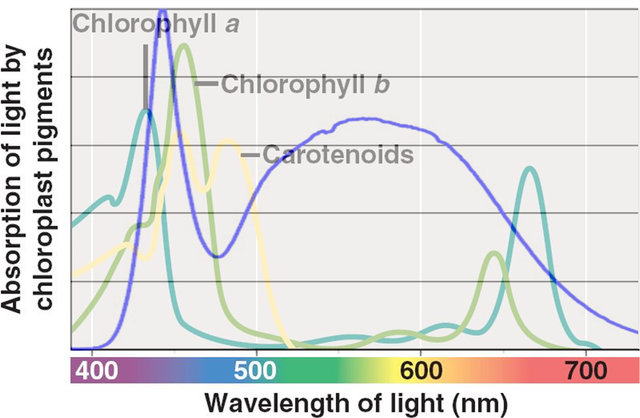
(image created by me from here and here)
Philips Luxeon ES 2,700K Warm White 3 Watt LED
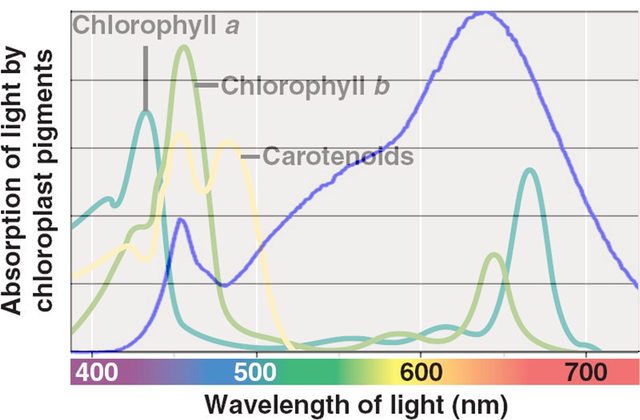
(image created by me from here and here)
You'll note that there is a great deal of light energy that is not available for the plant to harness and this is why plants don't thrive in your windowless cubicle hell. So lets consider how we can tailor our lighting for the plants while maximizing energy efficiency.
Colored Light
Below is the wavelength and output of Phillips' current color LED offerings. Notice how each is a rather compressed bellcurve within a very narrow range of wavelengths.
Philips Luxeon ES Color 3 Watt LEDs
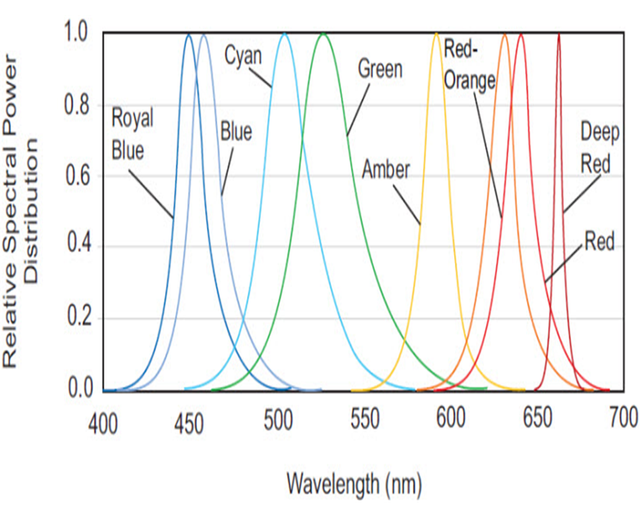
(image source)
Below I've layered the offerings over our pigment graphic to illustrate which colors may be of use to us and which are not of much use.
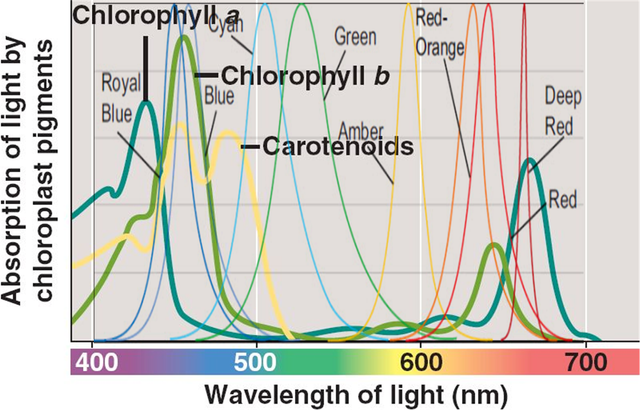
(image created by me from here and here)
As you can see, Royal Blue, Blue, Red, and Deep Red are the primary colors the plant is able to use with some use of Cyan by the carotenoids of the plant. For efficiency and to focus on the primary pigments, the chlorophylls, we will omit Cyan from our choices. Cutting down to just the primary four we have this spectrum and its overlay over the pigment graphic.
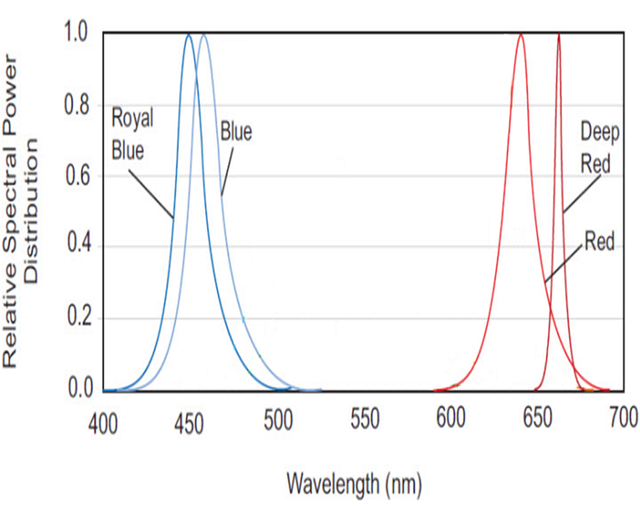
(image created by me from here)
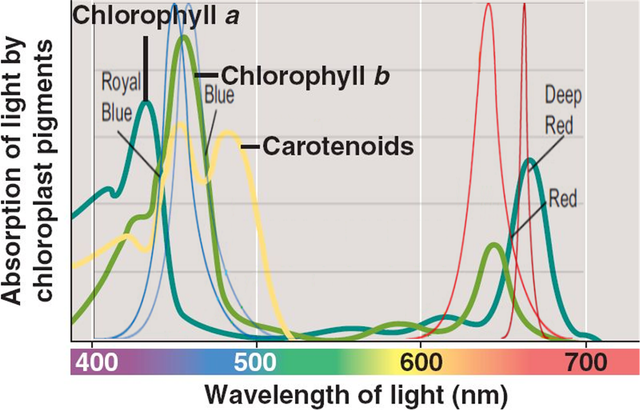
(image created by me from here and here)
As you can see using these four colors of LED you can maximize your growth per watt of electricity expended by careful selection and design of your lighting. It is important to note that all species are different so you must do some research to determine what is best for your particular species or application. Here are some general pointers:
- The color your eye sees in natural sunlight can give you an idea of the colors your species is absorbing... i.e. the colors you don't see.
- As you can see the upper wavelengths are less easily absorbed than the lower, so you may wish to have a higher ratio of red LEDs relative to the blues.
It Annoys Me We Are Missing the Lower Range of Chlorophyll A
We have that annoying total miss from about 430nm wavelength and below of the most plentiful and most important photosynthetic pigment of chlorophyll a. I have a motto: "If something is worth doing, its worth overdoing". Enter the violet and ultraviolet high power LEDs.
PLEASE DON'T TRY THIS AT HOME!
Exposure to high power ultraviolet light can destroy vitamin A in the skin, damage DNA, and cause collagen fiber damage, freckling and sunburn, along with higher risk of skin cancer. A typical human eye will respond to wavelengths from about 400 to 700 nm. Because the lower wavelengths are outside that range they are not visible to the human eye. Your blink reflex won't even trigger when looking at damaging levels of light. Think of it as equivalent to staring into the sun or welding without eye protection without knowing it. In addition to damage to your person, it also is a potent source of degradation of polymers, pigments and dyes.
YOU HAVE BEEN WARNED
Now that that is out of the way lets take a look at the output's of some UV and violet LED offerings. Here are three from Philips that will meet our needs quite nicely.
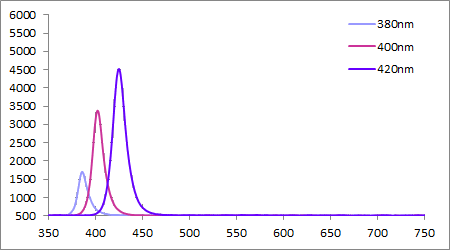
(image source)
And lets lay it over our plants' needs.
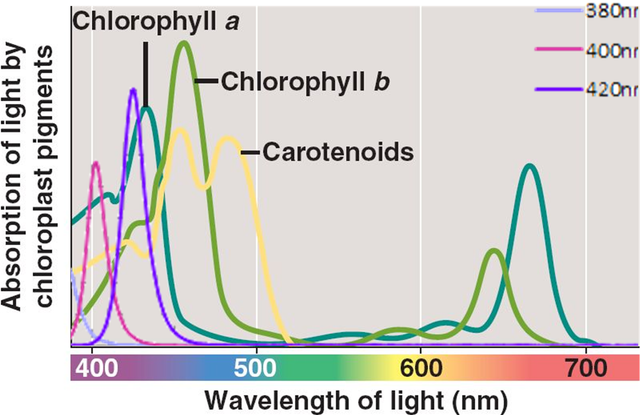
(image created by me from here and here)
Very nice... bringing it all together with our 4 colors and bam!
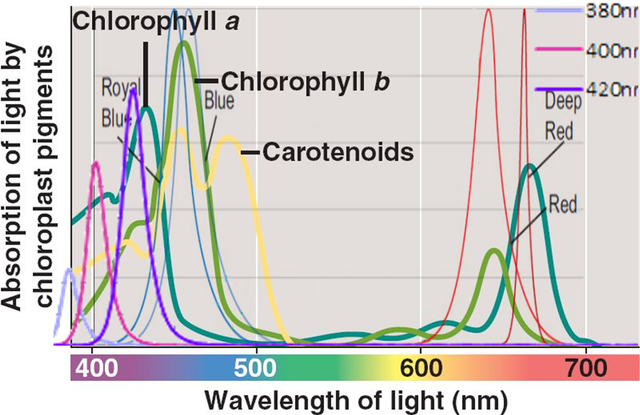
(image created by me from here and here)
Pretty close and super efficient!
A Case for Full Spectrum?
Not so keen on UV? Want to be able to see your plants easily? Just as an exercise I've layered the 5000K and 2300K white light LED's along with our 4 color LEDs to include a little more of the far left and right of the spectrum of chlorophyll a as well as to address the carotenoids. As you can see we have a great deal of wasted energy in the middle, but whether this is acceptable is for you to decide for your application. Also make note that in our purely 4 color design you will have difficulty seeing the plant clearly due to the absence of green-yellow light... it will appear very odd looking. So white light has the added benefit of being useful to your human eye.
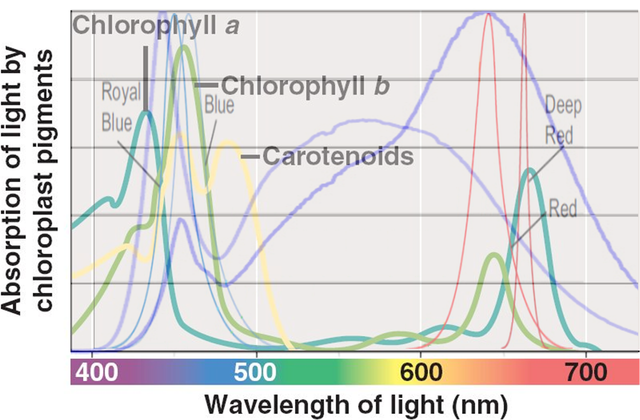
(image created by me from here and here)
Conclusion
As it turns out those tomato plants grew better not because of any of the reasons, but simply because it was reflecting more photosynthesis relevant light to the plant. My reef tank lighting I essentially designed to be the opposite of our final example by staying away from the photosynthesis wavelengths. Particularly the red wavelengths. No more algae.
So, we've designed an ideal LED system for growing plants. How many LED's and what ratio to each other is the subject of another article. These questions depend on how much power you wish to use, what species you're targeting, what your heating/cooling requirements and tolerances are, budget, and individual output of the LED's (all the above graphics show normalized output). In other words, you may have to use twice the LEDs of one color and thus twice the energy more or less to get the same output lumens as another color due to the nature of LEDs.
Your reef tank is presumably full of water. How did you adjust your lighting scheme for that?
https://en.wikipedia.org/wiki/Electromagnetic_absorption_by_water
The absorption in liquid water is minimal in the visible range and even in the lower infrared or upper ultraviolet. There are also many other various particulates in seawater but I'll ignore there negligible effect. The greater requirement for the reef tank is to ensure that the depth of the tank is accounted for to ensure sufficient penetration to the bottom (depends also on what is in the tank and where in the tank). This is accomplished with higher power LEDs, or putting optics on them to adjust the angle of the LED beam (typically about 90 degrees).. A wider beam for more coverage or closer to the water positioning in a shallower tank. Narrower for more penetration in a deeper tank or more coverage via greater distance from the water placement.
Liquid water absorption spectrum across a wide wavelength range.
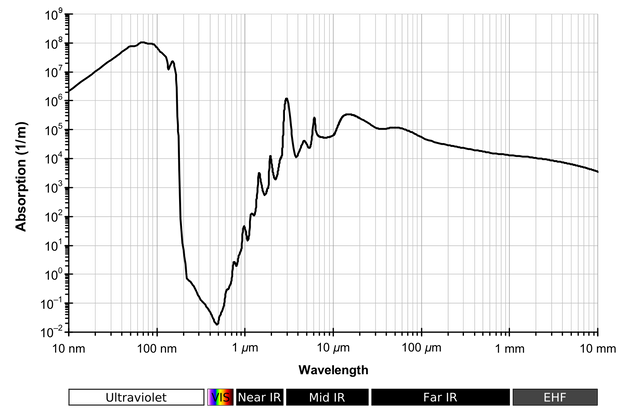
Did that answer your question?
Sort of. I guess I was thinking about the stygian depths of the oceans. Is it the plankton soaking up all the light, or is the "negligible" absorption of the water because there's only a couple hundred gallons in a tank, vs the scary-huge amounts of water in lakes and oceans.
Given that plankton accounts for the majority of the Earths O2 production and it can literally be seen from space... I'm sure it's a combo of both but I'd wager mostly plankton.
I have never thought about that. I will definitely try it with my tomatoes next year!
LED's or the red mulch?
The red mulch. LEDs in the middle of the garden may actually be difficult to realize (I first need to bring electricity there).
LED's on a flat heatsink with solar on the other side? lol
Yes that may work... but I was not really thinking about that as solar panels are not allowed (on rooftops) where I live. But a small one in the middle of the garden should be fine.
a solar fence would that be an idea?
This may have to be kind of wide, no?
Wow i am blown away by this post. I did my own research because i was facinated with NASA's project veggie. This is one of the most comprehensive pieces of information i have come across. I also read that green wavelengths really are not needed and are only added so the food doesnt "look displeasing".
Great post! I'm not sure if it is too long, or maybe even too short.
How do you measure the light spectrum?
I think there will be people who also want to do measurements at home. So it would be great if there is an affordable spectrum plot tool. (DIY perhaps?)